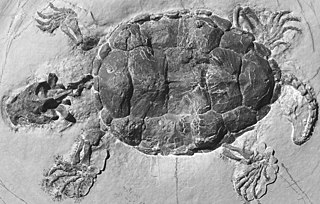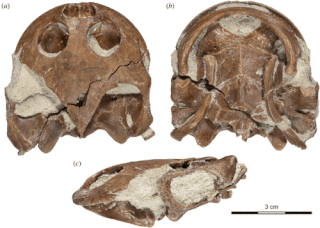 W
WThe Pleurodira are one of the two living suborders of turtles, the other being the Cryptodira. The division between these two suborders represents a very deep evolutionary divide between two very different types of turtles. The physical differences between them, although anatomical and largely internal, are nonetheless significant, and the zoogeographic implications of them are substantial. The Pleurodira are known more commonly as the side-necked turtles and the name Pleurodira quite literally translates to side neck, whereas the Cryptodira are known as hidden-necked turtles. The Pleurodira turtles are currently restricted to freshwater habitats in the Southern Hemisphere, largely to Australia, South America, and Africa. Within the Pleurodira, three living families are represented: Chelidae, also known as the Austro-South American side-necked turtles, the Pelomedusidae, also known as the African mud terrapins, and the Podocnemididae, also known as the American side-neck river turtles. However, they are a cosmopolitan clade across the Cretaceous and Cenozoic, and even occurred in marine environments around the world.
 W
WAraripemydidae is a family of freshwater aquatic turtles belonging to the order Pleurodira, known from the Early Cretaceous of South America and Africa. The family contains two recognised monotypic genera, Araripemys and Taquetochelys, from the Santana Group of Brazil and the Elrhaz Formation of Niger, respectively, which date to the Aptian-Albian stages of the Early Cretaceous. They are consider to be the most basal lineage within the Pelomedusoides. They are thought to have been specialised suction feeders. Laganemys was named in 2013 but was later determined to be synonymous with Taquetochelys.
 W
WAraripemys is an extinct marine turtle genus from 112 to 109 million years ago, in the Early Cretaceous Crato and Romualdo Formations of the Araripe Basin in northeastern Brazil. It is one of the oldest known pleurodires.
 W
WDortokidae is an extinct family of freshwater pan-pleurodiran turtles, known from the Cretaceous and Paleocene of Europe. Only 3 species have been named, but indeterminate fossils show that they were abundant across western and eastern-central Europe during the Cretaceous. The family is only known from postcranial remains.
 W
WPlatychelyidae is an extinct family of pan-pleurodiran turtles, known from the Late Jurassic and Early Cretaceous of Europe, South America, North America, and the Caribbean. It represents the oldest known clade of stem-pleurodires. All known members have been found in marine or coastal deposits. Despite this, their limb morphology suggests that they were not adapted for open marine conditions, but were likely inhabitants of shallow water environments, including brackish and saline waters, and they likely never inhabited environments more marine than lagoons. Their tolerance for saline environments likely aided their dispersal during the breakup of Pangea. Platychelys is strongly morphologically similar to mata mata and snapping turtles, suggesting that it had a similar ecology as a ram or suction feeder.
 W
WSahonachelyidae is an extinct family of pelomedusoid turtles from the Late Cretaceous (Maastrichtian) Maevarano Formation of Madagascar. The clade was recognized in 2021 by Joyce et al., and contains two genera: Sahonachelys and Sokatra. The clade is characterized by the presence of a reduced contribution of the maxilla to the floor of the orbit, and, the presence of a distinct posterior process of the maxilla. The clade went extinct at the end of the Cretaceous period during the K-Pg extinction event.
 W
WSahonachelys is an extinct genus of pelomedusoid turtle from the Late Cretaceous (Maastrichtian) Maevarano Formation of Madagascar. The genus contains a single species, Sahonachelys mailakavava.